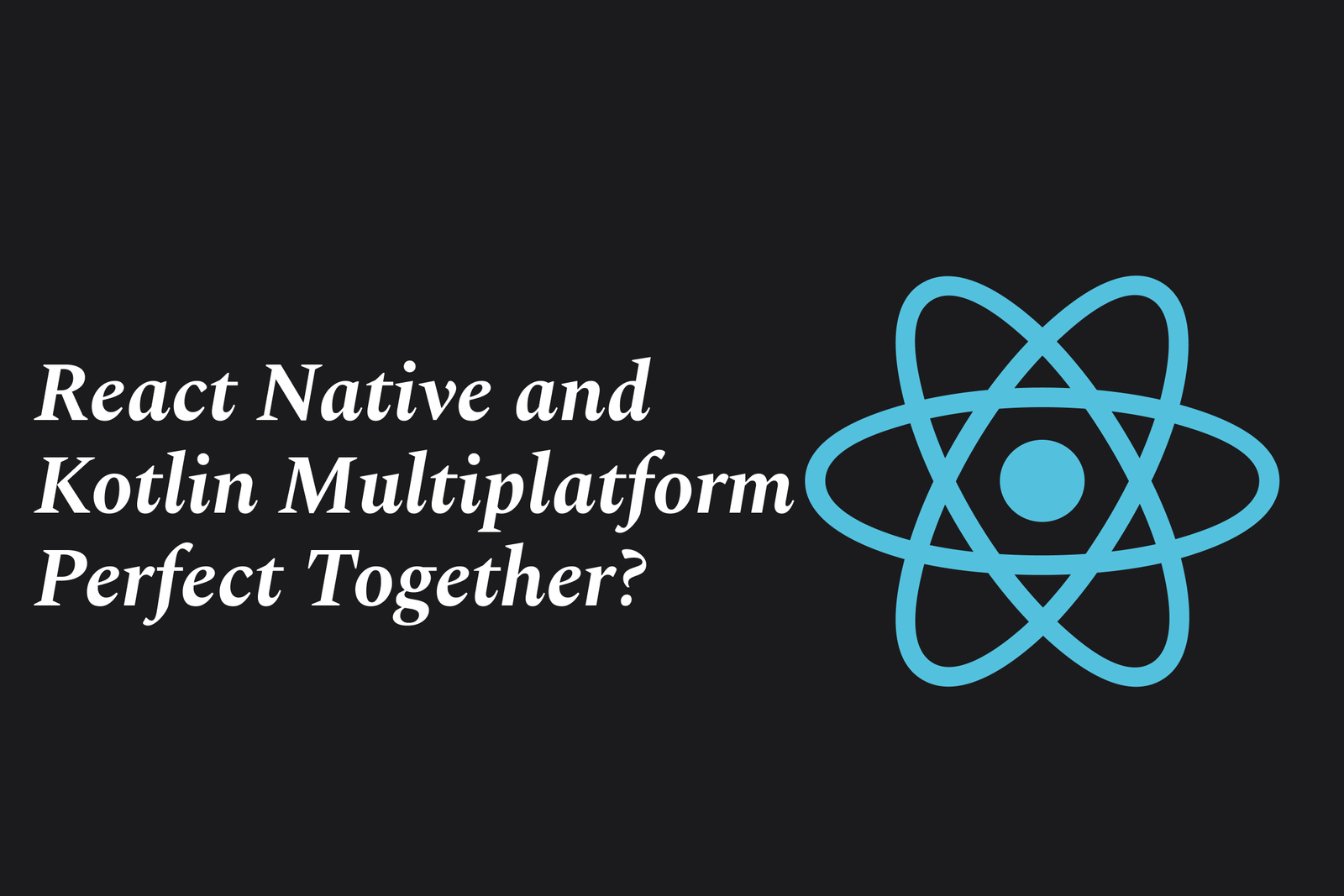React Native and Kotlin Multiplatform: Perfect together?
React Native enables building native UIs with JavaScript, while Kotlin Multiplatform shares core logic across platforms using Kotlin. Together, they combine React Native’s UI strengths with Kotlin’s multiplatform code sharing, offering a powerful, efficient approach to cross-platform app development.
React Native and Kotlin Multiplatform: Perfect Together?
1 ) Introduction to React Native and Kotlin Multiplatform
React Native is a popular open source framework maintained by Meta that enables developers to build native apps for Android, iOS, and more using JavaScript and React.
Kotlin Multiplatform (KMP) is a technology that allows sharing code across multiple platforms such as Android, iOS, JVM, and native environments, using Kotlin.
Both technologies aim to maximize code sharing for native app development but focus on different programming languages and ecosystems.
2 ) React Native Overview
Core Features
Written in JavaScript, React Native renders components with native platform UI elements like View, Text, and Image.
Runs JavaScript on a separate thread to maintain smooth UI animations without blocking the main thread.
Developer Experience
Enables developers familiar with React to build native apps using declarative component based architecture.
Supports extensive community libraries and native code integration.
Recommended Usage
Best used through frameworks like Expo that provide file based routing, universal libraries, and tooling to simplify building production ready apps.
Platform Support
Supports Android, iOS, TV, and Web platforms with additional platform extensions like React Native Windows and macOS.
3 ) Kotlin Multiplatform Overview
Enables code sharing primarily at the business logic and core library level across platforms while allowing platform specific UI implementations.
Emphasizes pure Kotlin code in the common module without dependencies on platform specific SDKs.
Target platforms can include JVM, Android, iOS, native, and JavaScript.
Some challenges exist, such as limited support for JVM common modules in IDEs and interoperability complexities when accessing platform SDKs.
4 ) Complementing Strengths of React Native and Kotlin Multiplatform
React Native excels at UI development with JavaScript driven declarative UI components and native rendering.
Kotlin Multiplatform excels at sharing complex business logic and reusable code across native platforms using Kotlin.
Combining Kotlin Multiplatform for shared logic with React Native for UI can leverage the best of both ecosystems:
Kotlin Multiplatform handles platform independent core modules.
React Native provides expressive UI components and smooth user experience.
This combination can offer maintainability, performance, and efficient native development workflows.
5 ) Community and Ecosystem Considerations
React Native enjoys robust community support with contributors from Meta and major companies, active projects, and widespread adoption.
Kotlin Multiplatform is rapidly evolving with contributions from JetBrains and a growing ecosystem focusing on multiplatform shared code.
Both have tooling support and developer resources, but integrating them requires bridging JavaScript and Kotlin carefully.
6 ) Conclusion
React Native and Kotlin Multiplatform serve complementary purposes in native app development.
While React Native makes native UI development accessible with JavaScript, Kotlin Multiplatform enables true code sharing beyond UI for logic heavy applications.
Together, they can form an effective cross platform development strategy by leveraging Kotlin’s multiplatform codebase and React Native’s UI capabilities.
Developers should evaluate their project’s needs to decide on adopting one or integrating both for optimal productivity and code reuse.
https://justacademy.in/news-detail/react-native-vs-flutter:-developer-opinions-from-2025
https://justacademy.in/news-detail/react-native-navigation-trends-you-can?t-ignore
https://justacademy.in/news-detail/android-input-method-editors-updates
https://justacademy.in/news-detail/android-app-monetization-strategies-2025
https://justacademy.in/news-detail/flutter-plugin-security-best-practices
Related Posts
Java supports GDPR and data privacy by enabling secure data handling through encryption, controlled access, and precise data management. It allows developers to minimize PII exposure, ensure data confidentiality, and design workflows that comply with data protection regulations effectively.
Java code quality tools have evolved to include advanced static analysis, integrated security checks, and AI-powered code reviews. These updates help developers detect bugs, enforce coding standards, and enhance security, streamlining the development process and improving overall code reliability.
Java remains a cornerstone in big tech companies, evolving with modern features like records, pattern matching, and virtual threads. Its robust ecosystem, enhanced performance, and growing AI integrations keep it vital for both legacy systems and innovative new projects.
Java and CI/CD pipeline optimizations streamline Java application development by automating builds, tests, and deployments. They improve efficiency through parallelization, caching, and secure secrets management, enabling faster feedback loops and more reliable, scalable software delivery.
Java supports modern cryptography standards through its flexible Java Cryptography Architecture (JCA), enabling integration of advanced algorithms like AES, EdDSA, and post-quantum tools. Libraries like Bouncy Castle offer FIPS-certified, hardware-accelerated implementations for secure development.
Java 23 enhances record patterns by enabling concise, direct destructuring of record components within pattern matching, simplifying type checks and data extraction. This improvement boosts code readability and expressiveness by reducing boilerplate in handling immutable data classes.
Java remains a top choice for mobile app backends, powering scalable, secure, and high-performance server-side solutions. Latest trends include cloud-native microservices, reactive programming, and enhanced JVM optimizations, enabling efficient, flexible, and robust mobile backend development.
Java SE 24 and LTS Java SE 21 offer enhanced features and performance, while Apache Spark 4.0.0 introduces Scala 2.13 support and advanced ML and SQL capabilities. Together, they empower developers to build scalable, high-performance data applications with modern tools.
JUnit 5 modernizes Java testing with a modular architecture, improved assertions, and seamless Java 8+ support. Beyond JUnit, tools like Mockito and AssertJ enhance mocking and assertions, creating a powerful, flexible ecosystem for writing clean, efficient Java unit tests.
Java plays a pivotal role in cloud automation tools by providing a robust, platform-independent language used to build scalable automation frameworks like Jenkins and Selenium, enabling efficient CI/CD pipelines, testing, and orchestration across diverse cloud environments.










